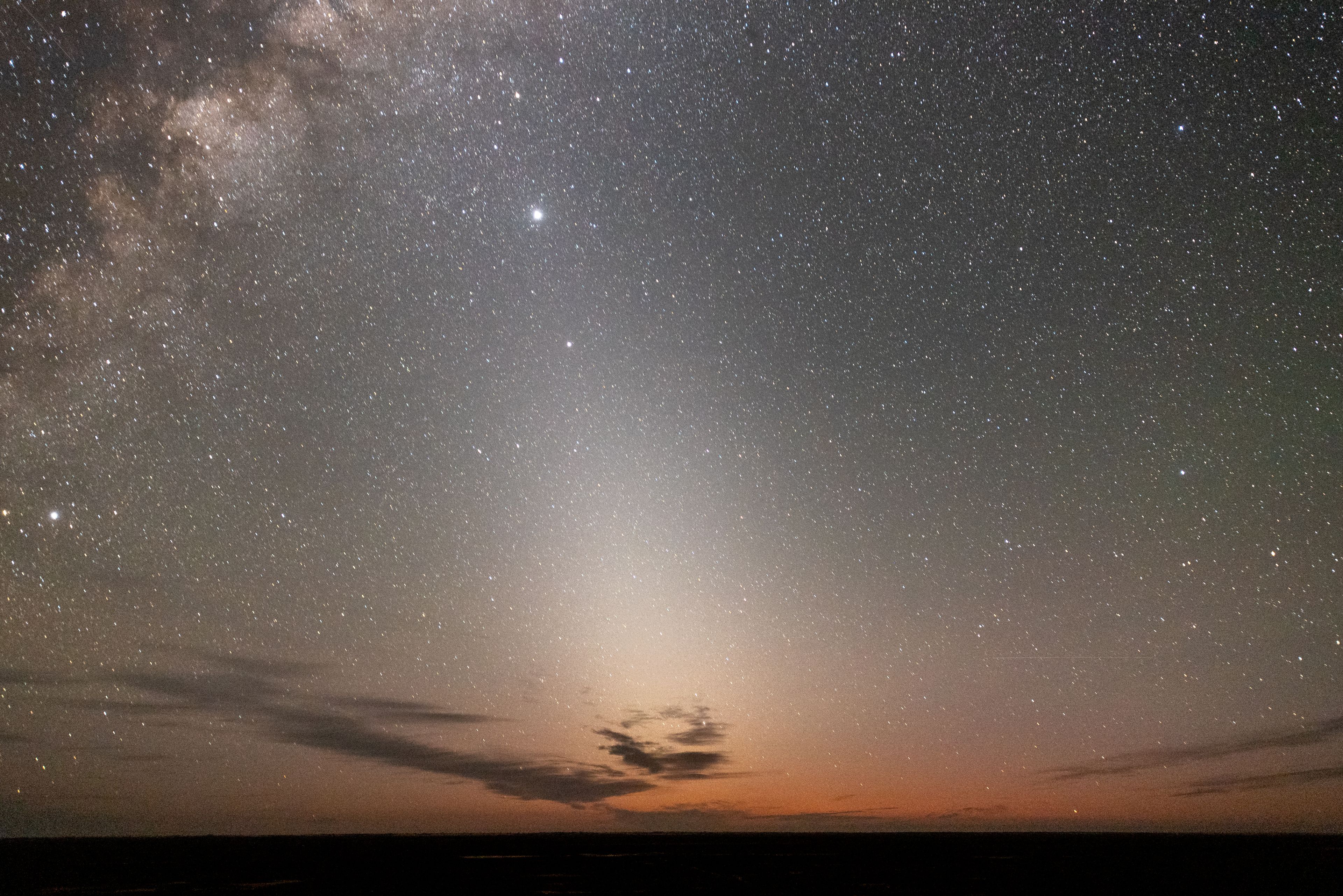Home/Curriculum resources/Stellar scintillation /Activity 1 - Uier Naskaisreda (The Twinkling Stars) song
Learning Area:
Science
Year level:
Level 8
Suggested timing:
One lesson

Activity 1 - Uier Naskaisreda (The Twinkling Stars) song
This activity is a part of the Stellar scintillation resource.
Zodical Light. Photographer: Peter Lieverdink. Source: Flickr. License: CC BY-SA 2.0
Students will explore the scientific knowledge contained within the song Uier Naskaisreda, as a way to explore how cultural and scientific meanings are layered.
Step-by-step guide
Step 1: Watching The Twinkling Stars
Students will be shown a video of the Meriam elder Alo Tapim performing the song Uier Naskaisreda, meaning “The Twinkling Stars” 0
Students will read the lyrics of a Meriam song about the twinkling stars. The song is in the Meriam Mir language and translated into English. (ACSHE136)
Step 2: Finding the scientific knowledge
Students should study the lyrics and any scientific descriptions in the song. (ACSIS139)
After the students are provided a handout (see handout attached to the side) of the song’s translation, they should highlight the major elements of the song with respect to science (Suggested answer: The rain clouds are coming in, the ground is calm, the seasons are about to change, the scintillation is caused by changing winds)
Questions include “What is the seasonal change the song is describing?” “What time of year does it occur?” “What is the science behind the twinkling stars described in the song?” “How is this knowledge used for practical purposes?”.
For each of these questions, the students should take time to go online and look up climate information for Mer, as well as traditional seasons 0 .
This information is then matched with the content at the start of this module to explore the scientific basis for this knowledge, which Torres Strait Islander People developed long ago - see below. (ACSHE136)
How do Meriam people communicate these ideas to young people? (ACSIS139)
Wer Naskaisreda (The Twinkling Stars)
Song composed by George Passi. Lyrics provided by Segar Passi. Translated by Alo Tapim.
Why is it so calm tonight? [Why is it so quiet, without wind?] Why are the stars twinkling... Like sparks in a fire? I think it's because of the big wind The clouds are coming from the cold southwest And being swept to the northwest Why are the stars twinkling like sparks?
Teacher notes
This song describes seasonal change that occurs later in the year. In November and December, the air is very hot and still, but the skies are clear. The wind is often very low or dead still, something the Torres Strait Islander People call duldrum. They can see the stars rapidly twinkling above. This foretells a shift from the cooler, dryer season (Sager) dominated by southerly trade winds to the wet season (kuki), which is dominated by north-westerly trade winds. At this time of year, the winds are high altitude and are calmer at the ground level. These strong winds make the stars twinkle, hence the song.
Related activities within this resources:

Inquiry-based learning questions
These inquiry-based questions are provided for flexible classroom use, allowing teachers to tailor discussion and reflections specific to their classroom needs

Activity 2 - Observing Twinkling Stars
An out-of-class experiment that encourages students to observe stars and planets over a few nights or weeks.
Suggested timing:
One to two weeks